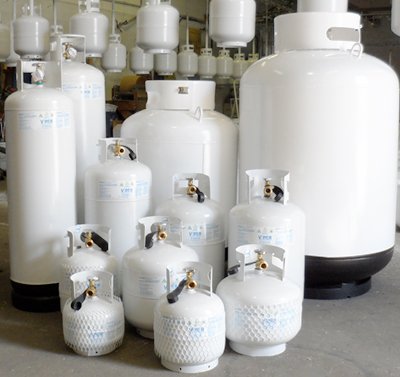Green Propane
Problem
As the world shifts more and more services to electricity (e.g. space heating, cooking, transportation, etc.) in the name of efficiency, automation, and decarbonization, we start to introduce a resiliency challenge: if everything runs on electricity, power outages become much more serious. Losing power on a cold winter night takes on a different degree of severity if you also lose heating and the ability to drive very far. Additionally, many people prefer using liquid/gas fuels for cooking on stovetops or grills; it just isn’t the same culinary experience on an electric grill. Beyond resilience and experience, a liquid fuel like propane has 5 times the energy per unit volume of compressed hydrogen and 25 times the energy per unit volume of a lithium ion battery.
Solution
Synthesize propane using CO2 extracted from the air using direct air capture (DAC) and green hydrogen produced from water electrolysis. While the upstream process is more expensive and complex than extracted propane from the Earth, the technologies exist to produce a propane product that is identical to tradition fossil propane and can be dropped into everyone’s existing appliances and distribution infrastructure. Why propane? Propane is the cleanest burning fuel of all the fossil fuels and easy to transport.
Business Model
Another benefit of propane is that is has existing markets that buy propane in small batches: 20 lb propane tanks used for grilling. A potentially ideal market entry point could be selling zero-carbon propane tanks at local convenience stores to urban yuppies who are willing to pay $50 instead of $20 for a tank. If one builds a highly automated green propane plant behind-the-meter at a wind farm, it would be possible to achieve ~$2/kg hydrogen (levelized) and $0.73/kg if carbon (assuming $200/tonne of CO2 for DAC). At these prices, (based on stoichiometry) a 20 lb tank of propane (~17.8 liters of propane) has about $17 of hydrogen and carbon atoms in it; it will take another $2 of electricity (@$30/MWh) to break-up the CO2 and synthesize the C3H8 (based on enthalpies of formation), so let’s round up to $20, and now let’s say the whole synthesizes process is only 50% efficient (I don’t know, I am just guessing, it may be worse), which gets us to a $40 cost structure for a 20 lb tank of zero carbon propane. One still needs to factor in trucking the propane for distribution and gross profit margin but it is plausible we may be in the ballpark of $50 retail. This offtake agreement could be vertically integrated into the construction and financing of a new wind farm or it could be retrofitted onto an existing wind farm that may be financially distressed. Hydrogen PTCs, ITCs, 45Q tax credits, and LCFS standards may subsidize part of this process and make the economics even stronger. Further, once a baseline revenue stream is established at a small scale for small batch grilling propane, one could gradually scale to off-grid space heating for homes that lack natural gas connections.

